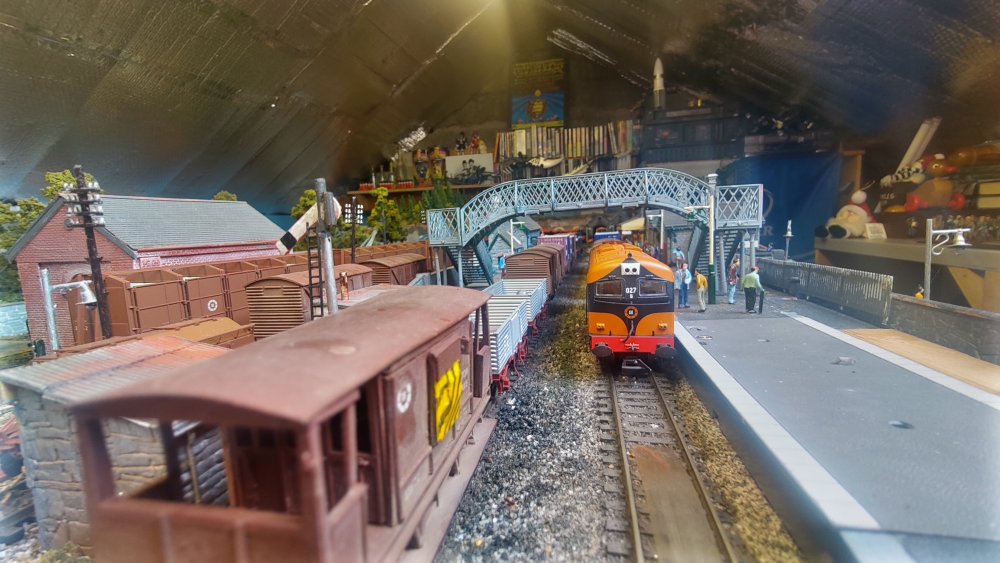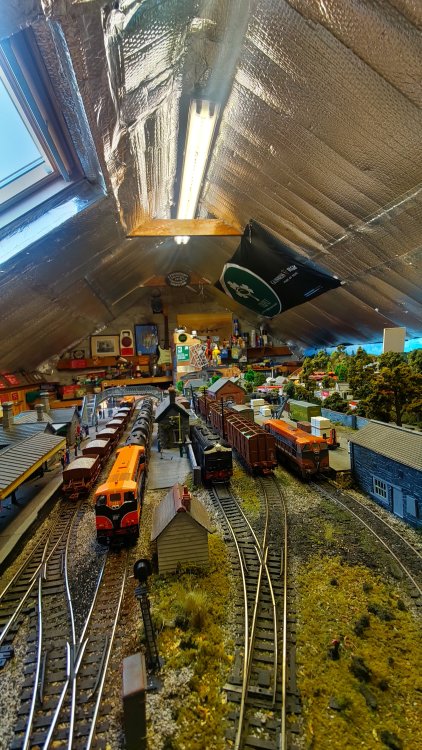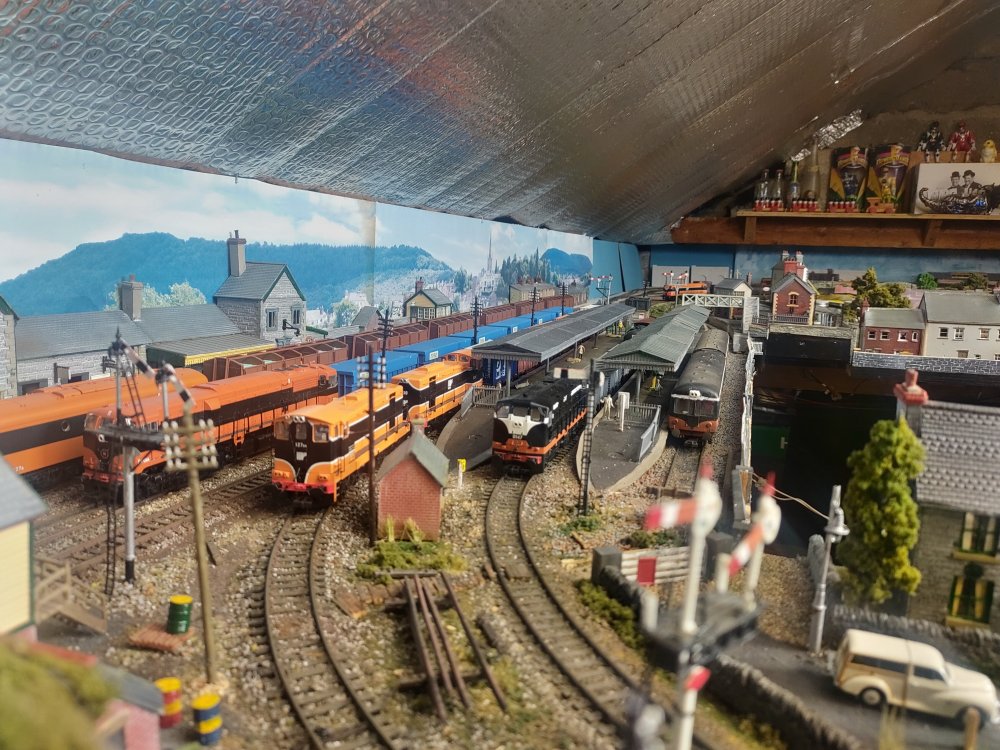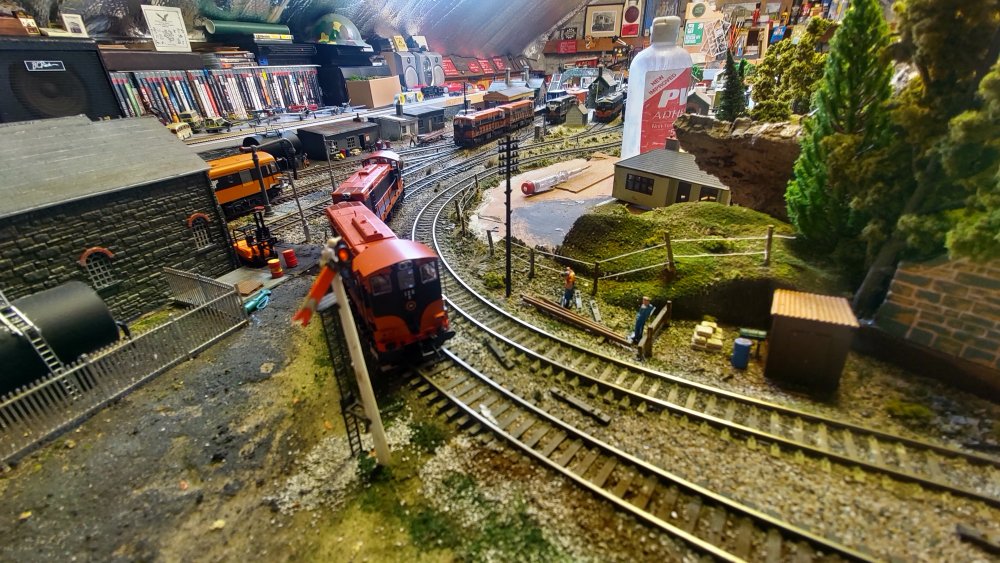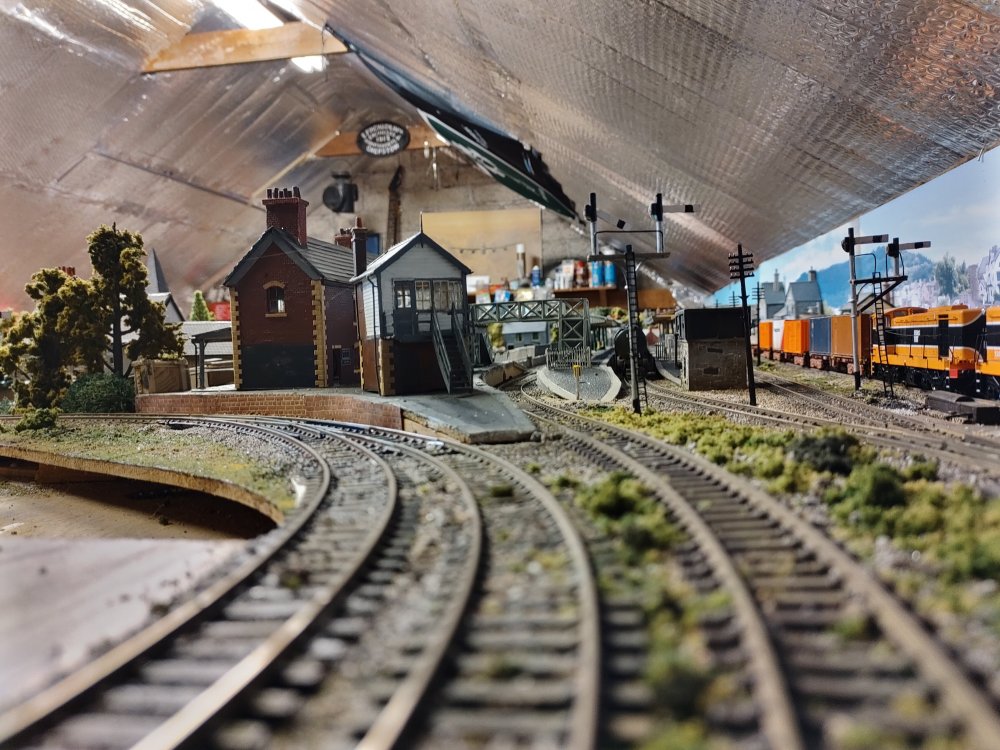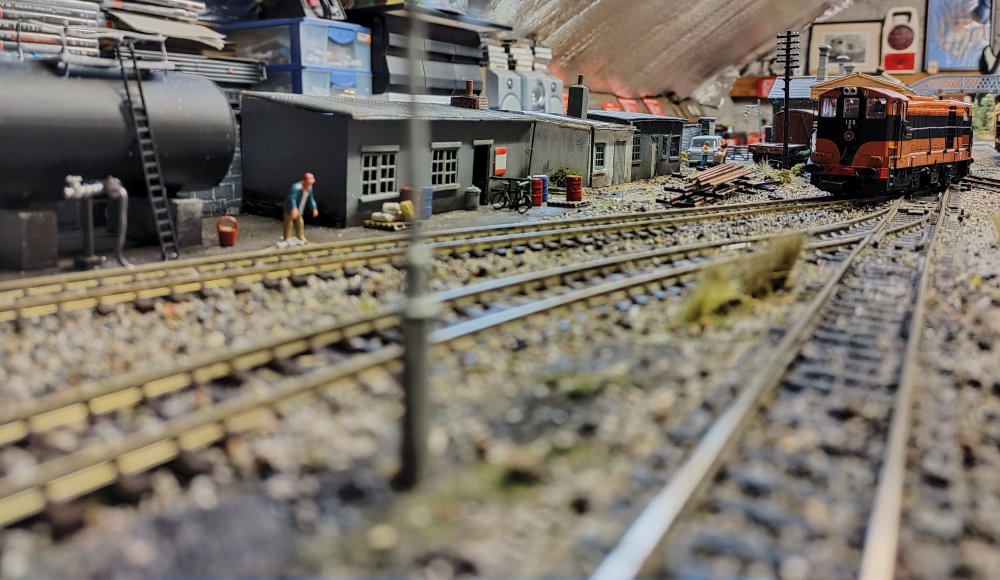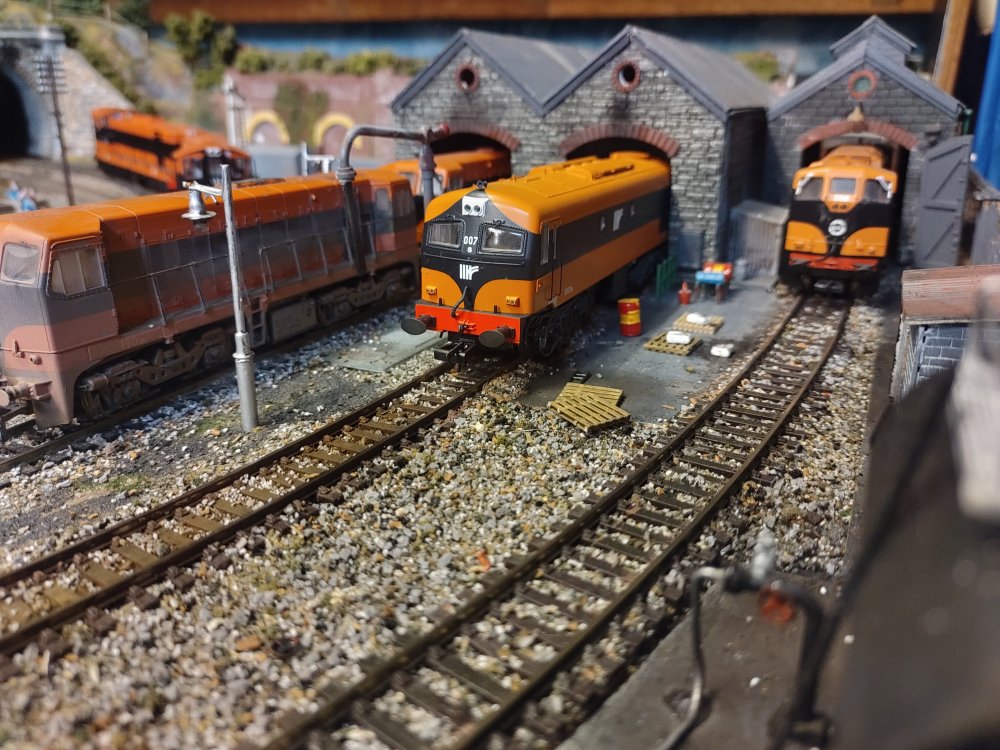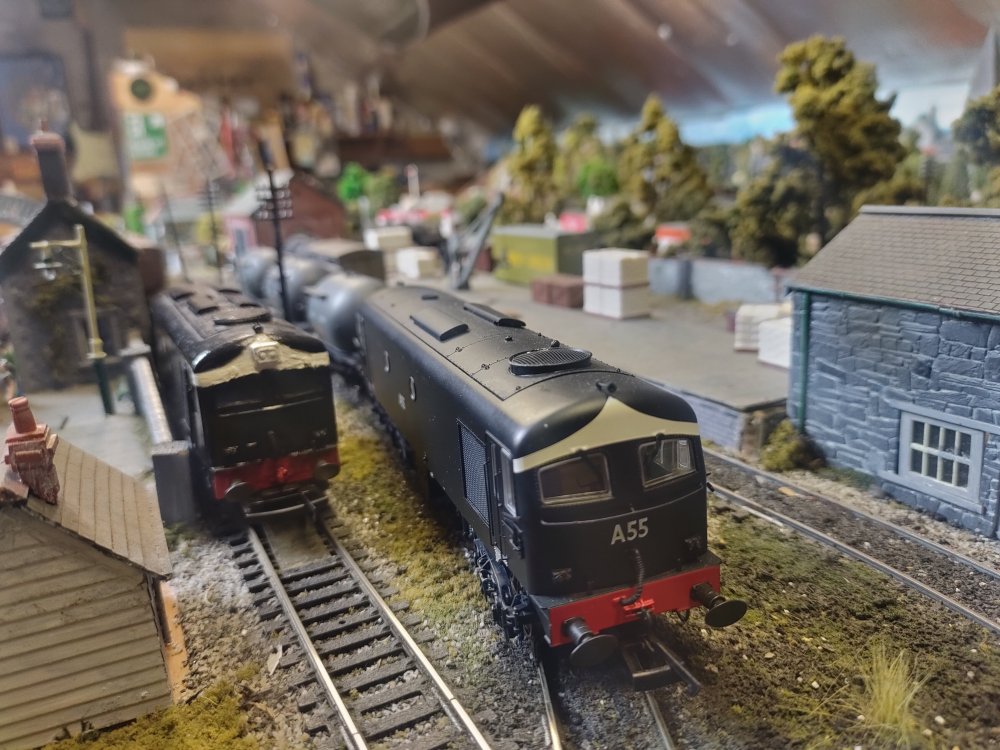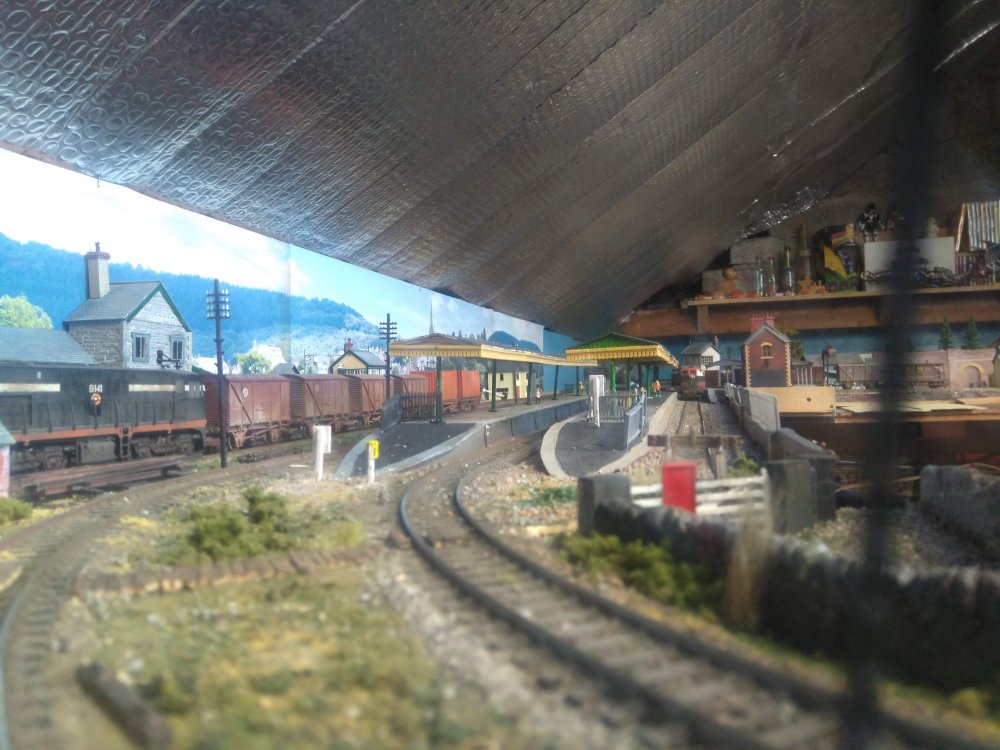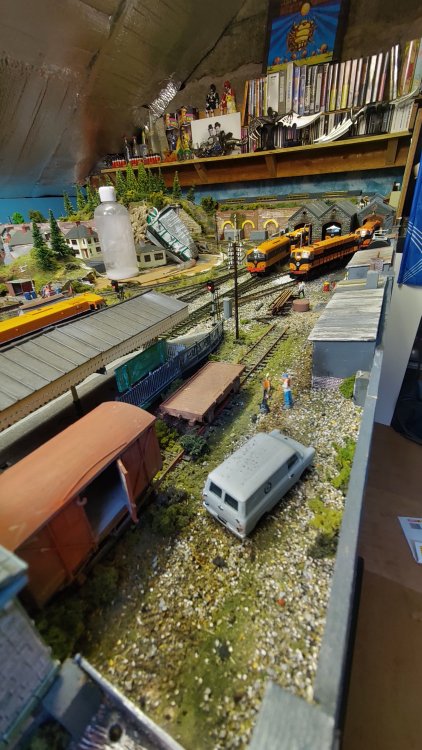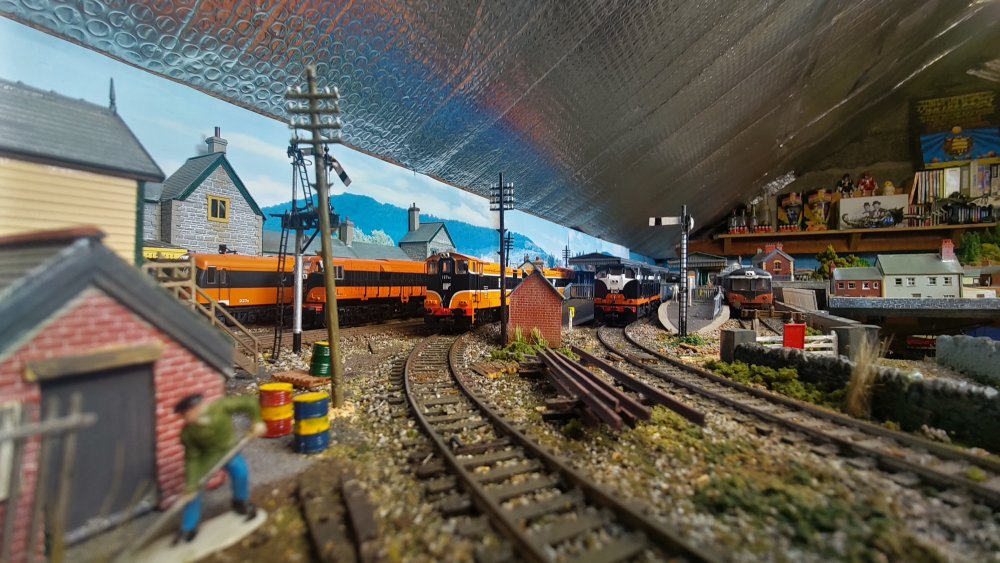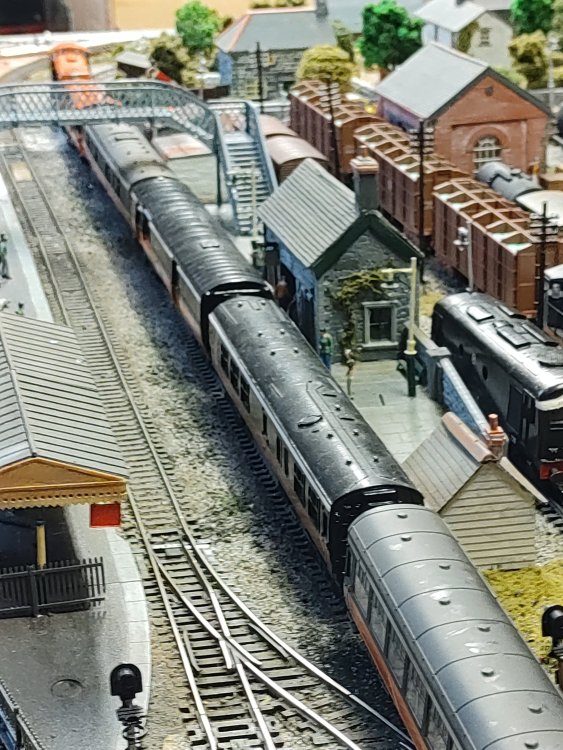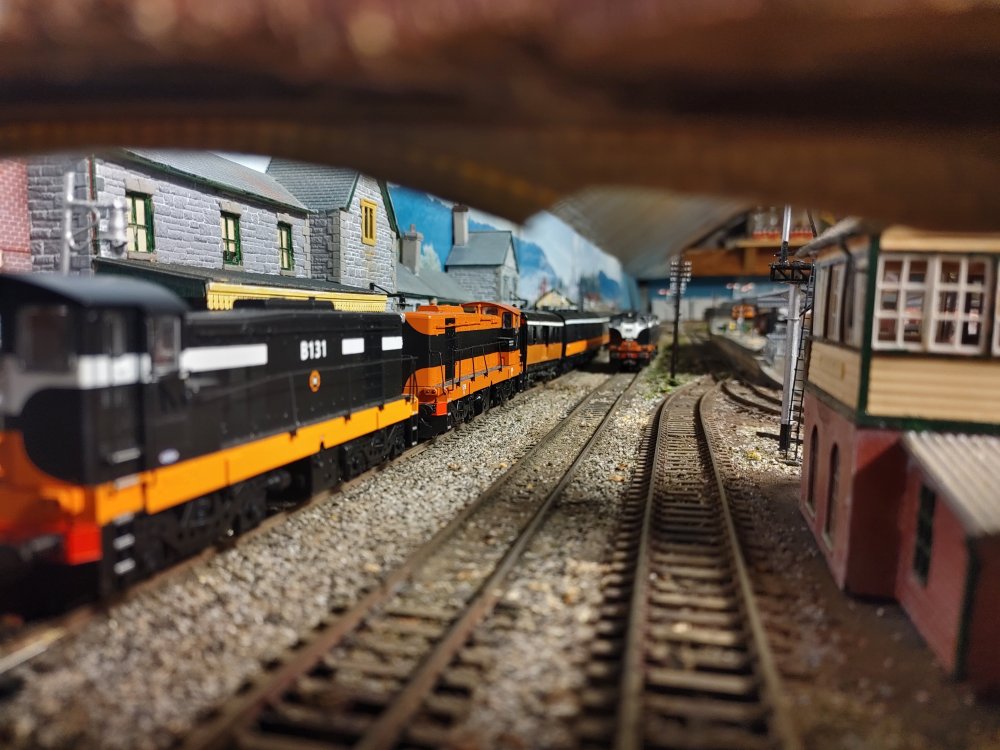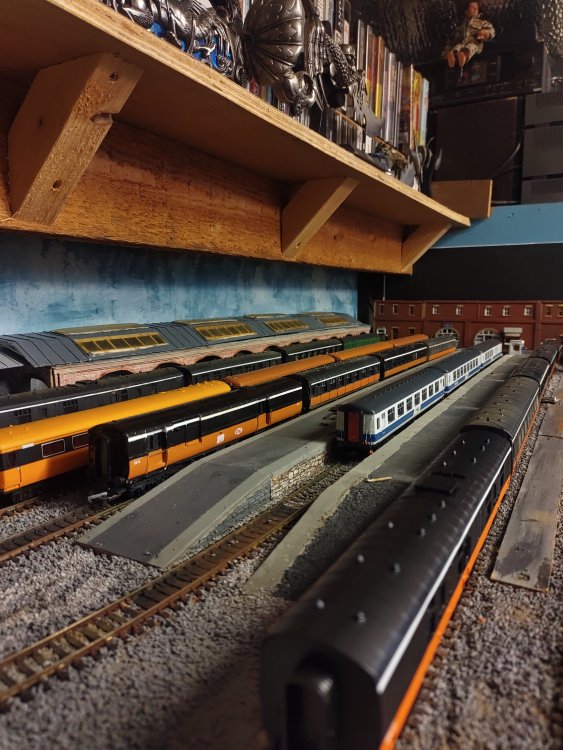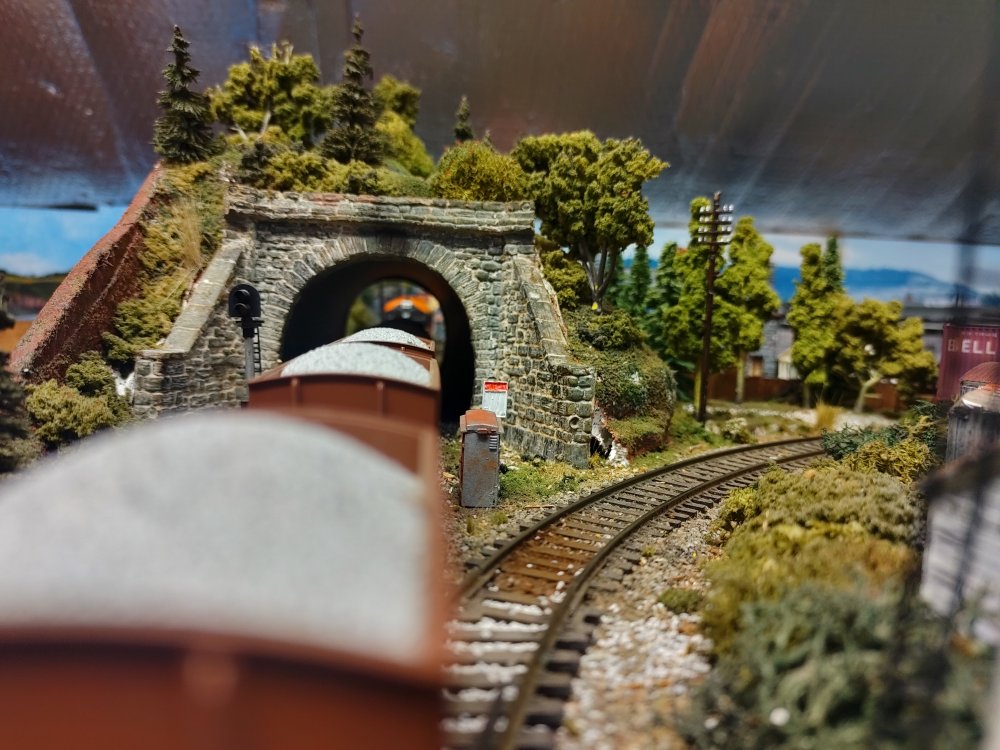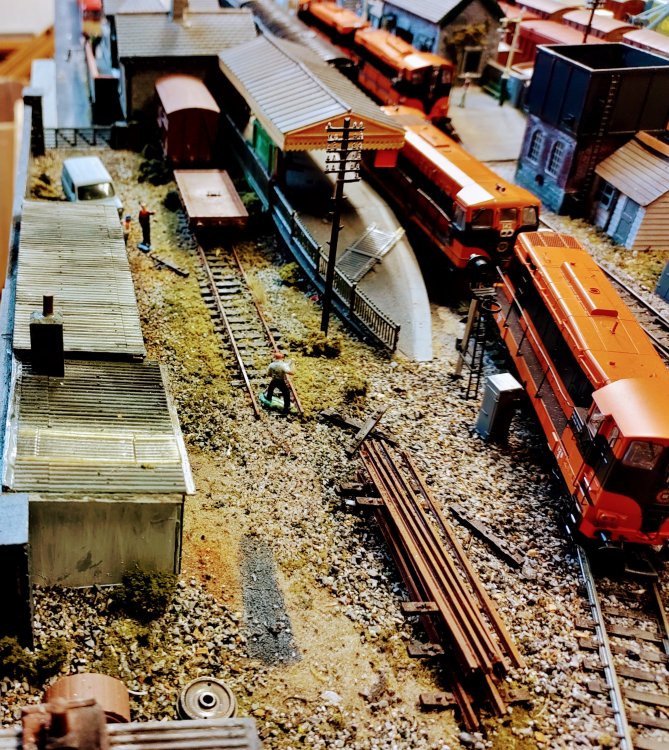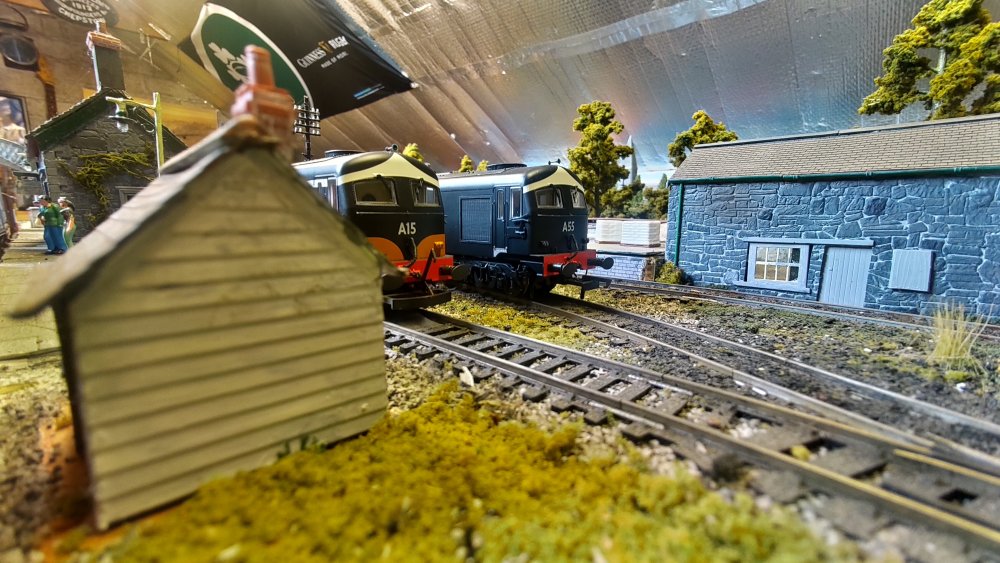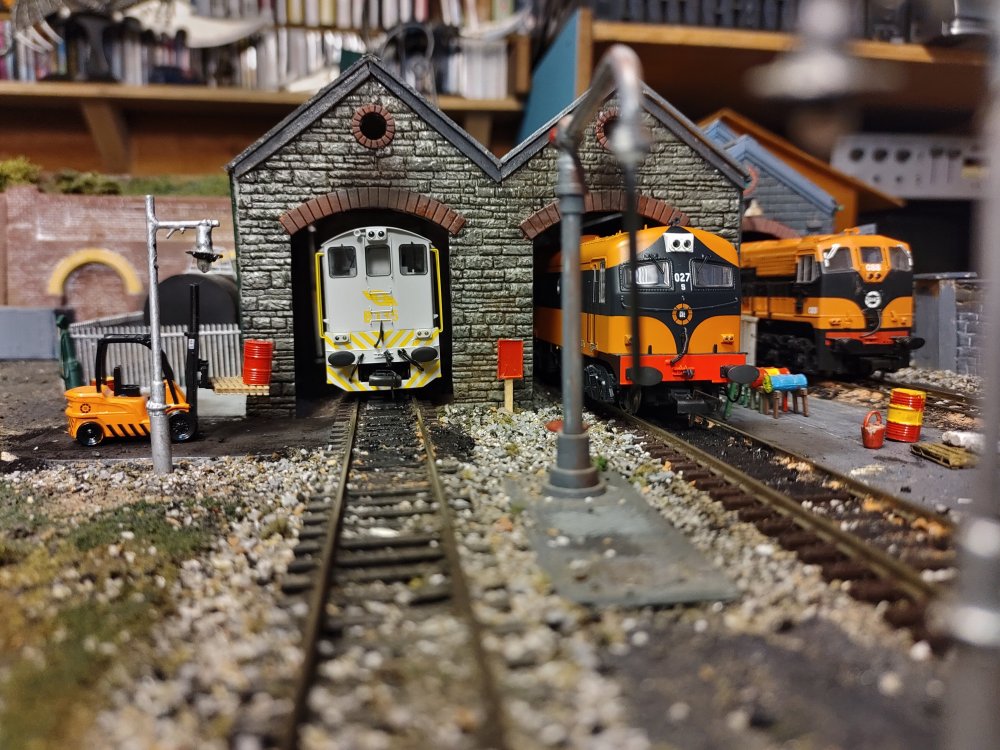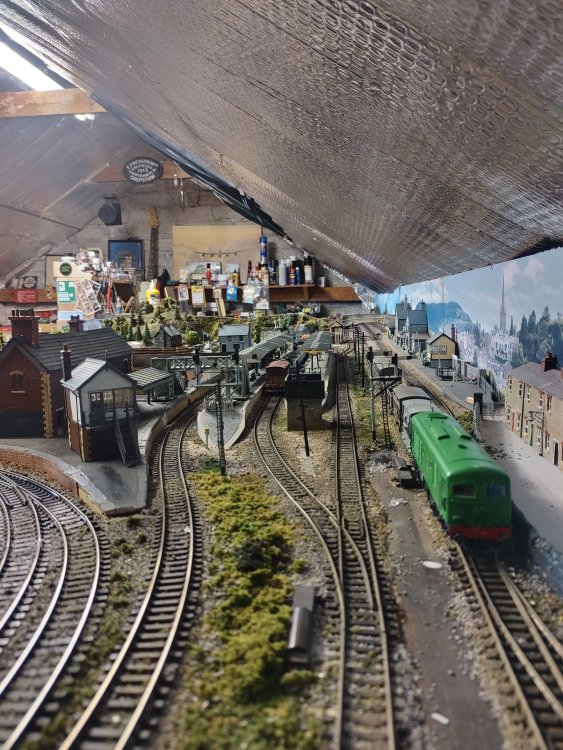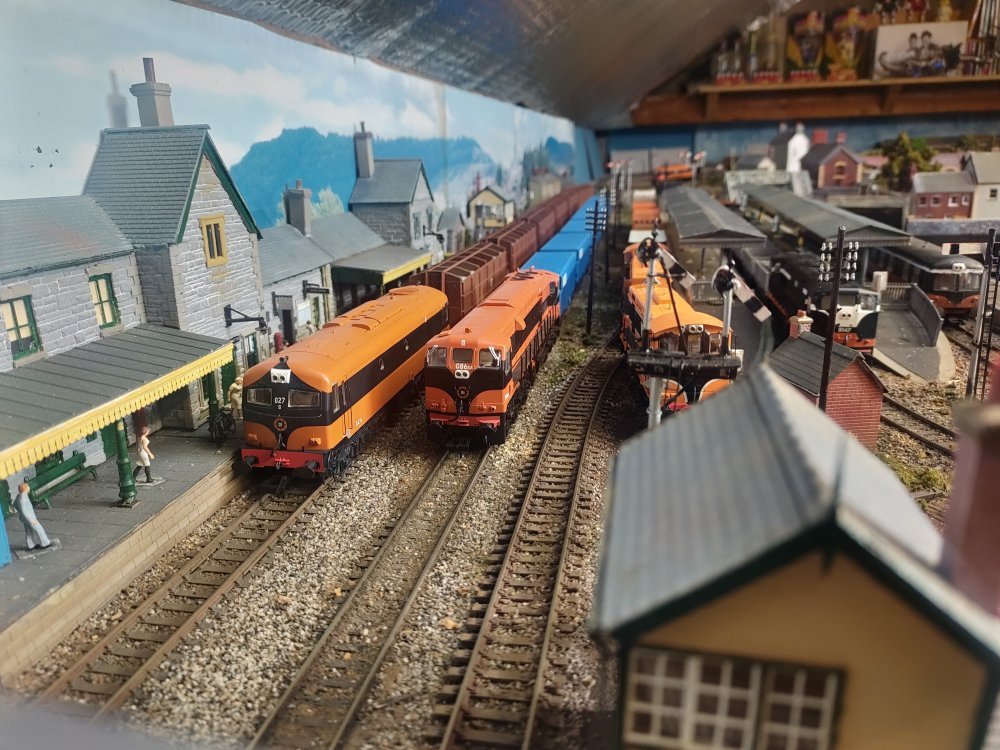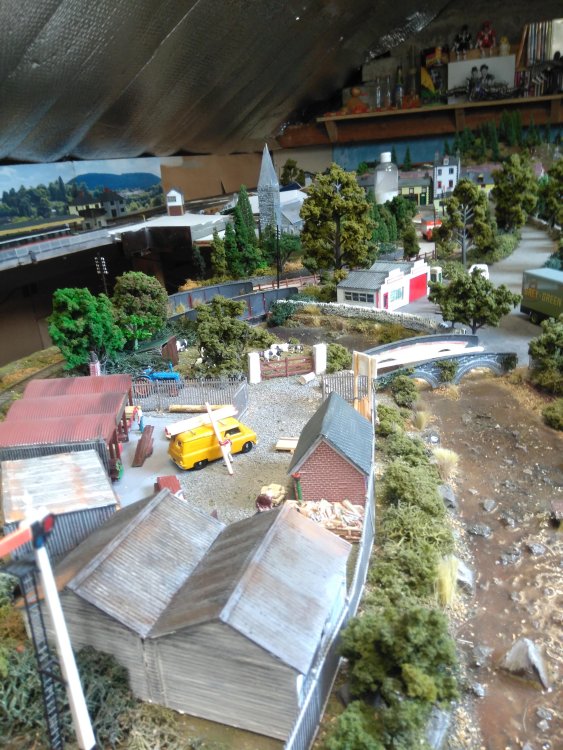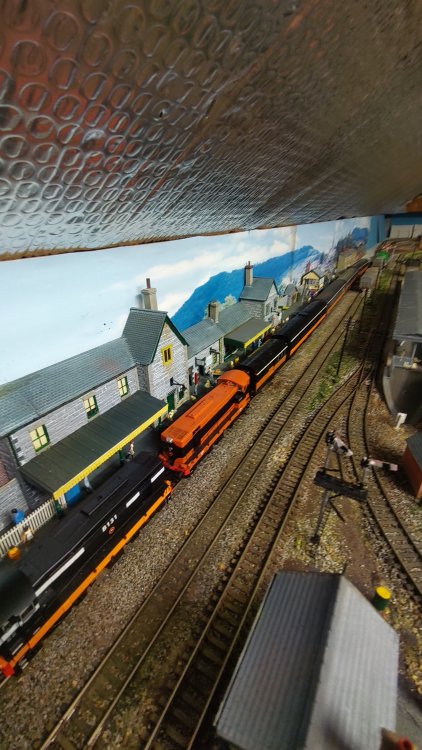
exciecoachbuilder
Members-
Posts
115 -
Joined
-
Last visited
-
Days Won
1
Content Type
Profiles
Forums
Resource Library
Events
Gallery
Blogs
Store
Community Map
Everything posted by exciecoachbuilder
-
Hi, it's a bit of both really. I can do end to end (shunting etc) and I can sit back and watch the trains go around. I wanted to have an old school 'roundy roundy' part because I think that I would have gotten bored with just back and forth shunting. The two layouts are joined, so I can do a bit of shunting, and then run the train onto the roundy' roundy' part. But the best part , and what really keeps me interested in the whole thing, is building stuff, and creating different scenes. There is a big snag list on the layout, some scenes are not completely finished. AIso, i usually take a break and don't go near the layout for weeks on end, sometimes months. Paul.
-
Thanks very much Rob, much appreciated.
-
Thanks very much Patrick, the disconnected siding idea was from something that I saw many years ago up the yard ( top of the works) in Inchicore. There was a disconnected siding, but it had a derailed 611 class loco , a very disheveled grey h van and overgrown ancient buffer stop. I wondered why the per/ way lads didn't remove the vehicles before pulling up the tracks? I think that it's a nice feature on the layout.
-
Thanks very much guys, much appreciated. The water is actually a tin of varnish, that I poured over the river bed, and I wasn't sure how it would turn out. But it turned out ok for me.
-
Hi guys, a "few" pictures of my layout. I started building it around 2013/14?, after looking at Johnathan and Barry's wonderful picture of Gort station, in their book 'rails through the west'. The initial plan was to try and build a 1970's Gort station,but as always with this hobby I got carried away, and it got bigger and bigger. So it is basically a fantasy Irish railway from the 60's, 70's and 80's. I really tried to stay ' supertrain', but I couldn't resist the Crossley A classes, and grey 121. It's hard to know if it will ever be finished, because I have chopped and changed a fair bit since I started building it. The terminus is the latest endeavor, so fingers crossed to see how that goes.? Paul.
- 16 replies
-
- 30
-

-

-
The Eagle Has Landed - NIR Hunslets Next For Accurascale IRM
exciecoachbuilder replied to Warbonnet's topic in News
Hi, I would say that it went straight back into traffic after being worked on in the wheel lathe. I don't recall any vehicles being trialled after a stint in the wheel lathe shop. The wheel lathe shop was like a production line, and I can't imagine every vehicle having to be sent out on trial? Maybe someone here knows better? -
Brass, end of story.
-
Inchicore Works traversers & internal shunting
exciecoachbuilder replied to dave182's question in Questions & Answers
70's , 80's and 90's, shunting coaches and wagons out of the workshops was done by forklift. One guy with a whistle to guide the forklift driver,and another guy at the opposite end of the traverser, chocks in hand making sure the coach or wagon doesn't over run the traverser. Health and safety wasn't a big thing back then. -
Possible Warning about Murphy Models Counterfeit Goods
exciecoachbuilder replied to WRENNEIRE's topic in News
Some good points being made here, a can of worms has certainly been opened. -
A great photo indeed, the black and tan livery on the GM's, was always very striking. B161, only recently repainted by the look of it.
-
Incredible stuff altogether, the grey streaks on the black paint at the bonnet end are exactly the way they looked, when the paint started to fade. Some serious weathering skills there Chris, well done sir. Paul
-
Hi Robert, if this is any help, the inside of the MK 2 gen van was a fairly bleak affair. Roof to floor was panelled with galvinised steel panels and speckled two tone grey lino on the floor. Depending on how much you want to detail the inside? The only colour on the inside was, raw timber bits , eg, some door frames, any timber in the guards compartment, seat, writing table etc were painted signal grey, the folding gangway doors were painted signal red on the inside, and other stuff like fire extinguisher boxes and crowbar boxes were also painted signal red. Cheers Paul....
-
Hi guys, the reason for the different shades of paint, is that the Mk3 gen van, and the Mk 2 coach in the photo's, had not yet been painted in the new ICI delux 2 pack orange paint that Irish rail had started to use in the then newly refurbished ( 1999/ 2000) paint shop in Inchicore. The older everlac brand of paint , that Irish rail used was a completely different shade of orange than the ICI paint. Paul....
-
No I don't think so?, I'm sure that the entire Craven fleet were resprayed / hand painted,first in the old paint shop, and then in newly fitted out(1998/99) paint shop. If so, they would have had the 2 white bands applied.
- 12 replies
-
- 2
-

-
- murphy models
- class 121
-
(and 1 more)
Tagged with:
-
Hattons launch 'Irish' range of Genesis Coaches
exciecoachbuilder replied to BosKonay's topic in News
It was actually the late 1970's that the "rebuild's" we're done. Paul. -
New IRM Announcement This Weekend! What Could it Be?
exciecoachbuilder replied to Warbonnet's topic in News
C class would be great, ammonia tankers would be nice too. -
O Gauge Irish Class A and Class B Tank Wagons
exciecoachbuilder replied to DJ Dangerous's topic in Irish Models
For the life of me, I can't remember what the ULT maintenance abbreviation stenciled onto the side of the chassis means? ( It was stenciled onto both carriages and wagons).But what I can see from the photo, January 1975 was the last time the wagon got its "ULT maintenance"? -
O Gauge Irish Class A and Class B Tank Wagons
exciecoachbuilder replied to DJ Dangerous's topic in Irish Models
Yep, at the side of the running shed in Inchicore works. -
Great photo, a big workshop too. I never knew that the Dundalk carriage shop was that big.
-
That's interesting, I didn't know single 121s worked on the Rosslare to Waterford service.
- 60 replies
-
- 2
-

-
This is brilliant, I remember this well. This was a posed photo for An Nuacht (the quarterly C.I.E. newspaper). The lad in the white coat was holding the drawing upside down, I kid you not. I was working in the carriage shop at this time and there was only one mock up built, so it's the same mock up. The powers that be decided that the crappy green colour was a no no. Good decision imo.
-
Hi, was the bus in the photo sold as an An 68? These buses were always known in the bus depot's and in the BMS in Inchicore works as D cars. The Spa Road built Van Hool buses built in the 70's were always called AN68's, not the one in this photo. Paul.
-
Inch flat moulding pulled away from the door frame, usually means rotting door pillar. Also door handle should be horizontal when closed. You would have got a slap on the back of the head, if you had have left a door handle looking like that.
.png.c363cdf5c3fb7955cd92a55eb6dbbae0.png)


